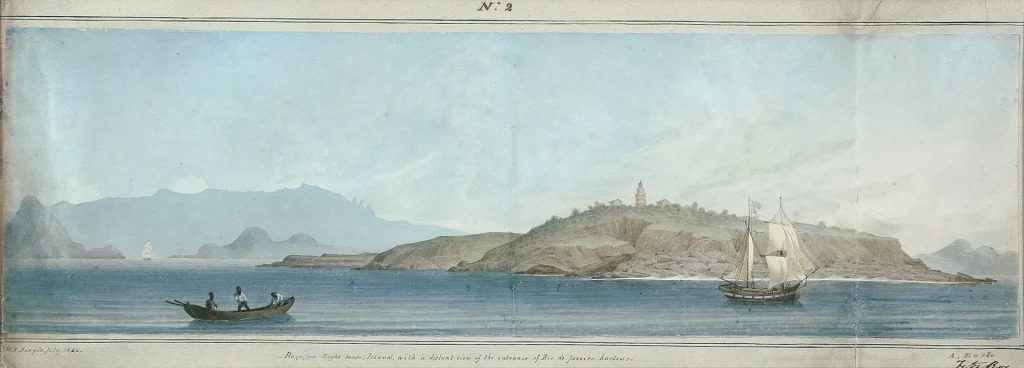
In December of 1831, HMS Beagle embarked on a historic voyage that would shape the course of scientific thought for generations to come. Aboard that ship, with a mere 22 years under his belt, was Charles Darwin, whose role would lead to remarkable discoveries about the natural world. The expedition lasted five years, and throughout the journey Darwin maintained a detailed diary in which he recorded his observations of plants, animals, and geological formations. Just a few months in, they reached Brazil, and it was there, as he studied and fell in love with the rainforest, that Darwin wrote this entry, its final sentence revealing a young naturalist almost overawed by his surroundings.
The Diary Entry
April 18th.—In returning we spent two days at Socêgo, and I employed them in collecting insects in the forest. The greater number of trees, although so lofty, are not more than three or four feet in circumference. There are, of course, a few of much greater dimension. Senhôr Manuel was then making a canoe 70 feet in length from a solid trunk, which had originally been 110 feet long, and of great thickness. The contrast of palm trees, growing amidst the common branching kinds, never fails to give the scene an intertropical character. Here the woods were ornamented by the Cabbage Palm—one of the most beautiful of its family. With a stem so narrow that it might be clasped with the two hands, it waves its elegant head at the height of forty or fifty feet above the ground. The woody creepers, themselves covered by other creepers, were of great thickness: some which I measured were two feet in circumference. Many of the older trees presented a very curious appearance from the tresses of a liana hanging from their boughs, and resembling bundles of hay. If the eye was turned from the world of foliage above, to the ground beneath, it was attracted by the extreme elegance of the leaves of the ferns and mimosae. The latter, in some parts, covered the surface with a brushwood only a few inches high. In walking across these thick beds of mimosae, a broad track was marked by the change of shade, produced by the drooping of their sensitive petioles. It is easy to specify the individual objects of admiration in these grand scenes; but it is not possible to give an adequate idea of the higher feelings of wonder, astonishment, and devotion, which fill and elevate the mind.
Further Reading
Darwin’s original notebooks and diaries are held at Cambridge University Library—his ‘Beagle Diary’ can be found at this link. In 1839 his account of the expedition was published, blandly titled Journal and remarks, and later as Journal of Researches into the geology and natural history of the various countries visited by H.M.S. Beagle. It has since become known as The Voyage of the Beagle. More info at the excellent Darwin Online.

Leave a Reply